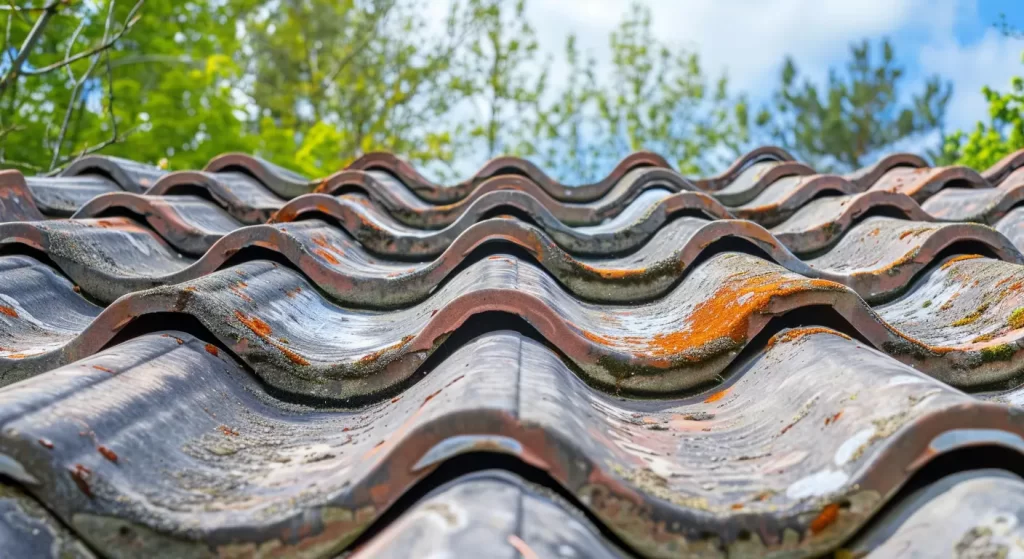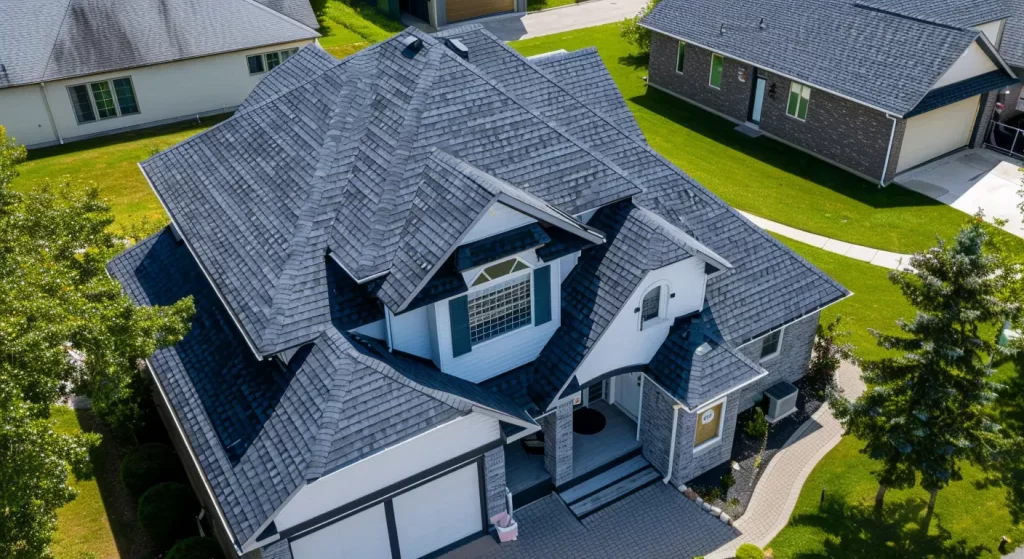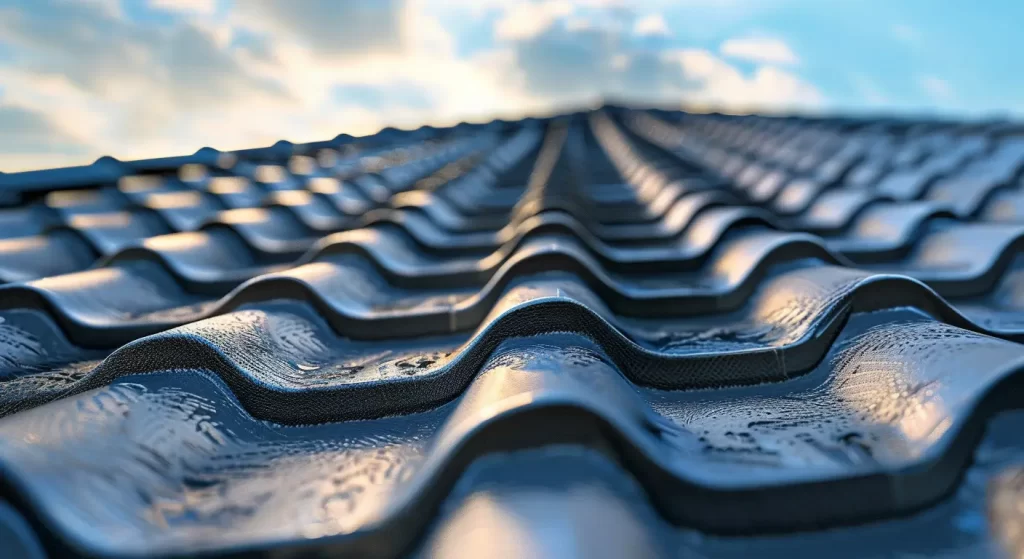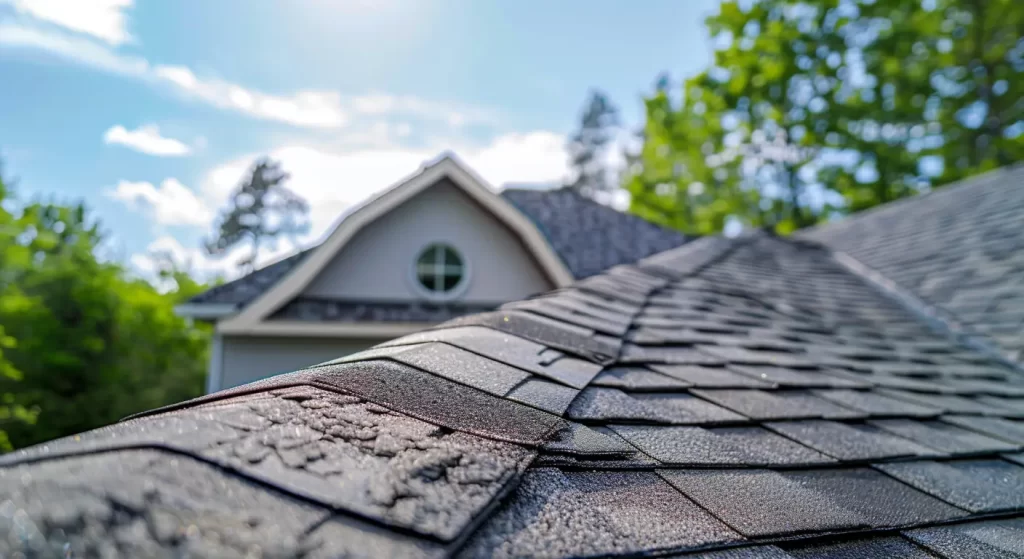The construction and roofing industry is shifting towards sustainability, with recyclable materials leading the way. These options reduce environmental impact while offering durable solutions for property owners. At Shield Roofing in San Antonio, TX, we have over 25 years of experience in sustainable roofing services. These materials can lower energy costs and decrease your carbon footprint.
Understanding Recyclable Roofing Materials in Today’s Market
Recyclable roofing materials have gained significant traction in today’s eco-conscious market, as property owners increasingly prioritize sustainability. This shift is driven by an understanding of how roofing waste impacts the environment and the importance of recycling to reduce the carbon footprint associated with new raw materials. Various options, including metal roofing and asphalt shingles, offer both durability and recyclability. To make informed choices, homeowners must consider the long-term benefits, including energy efficiency and lower energy costs linked to these friendly roofing options.
What Makes a Roofing Material Truly Recyclable?
A roofing material is considered truly recyclable if it can be reclaimed and processed into new products without losing quality. This includes materials that can be easily separated, processed at recycling facilities, and reused for similar applications, ultimately reducing waste and environmental impact.
Environmental Impact of Roofing Waste and Recycling
The roofing industry significantly contributes to environmental challenges, with a staggering amount of waste generated during roof replacements. Traditional materials like asphalt shingles and metal can lead to increased carbon footprints when improperly disposed of. However, recycling initiatives have emerged, transforming these materials into raw materials for new applications. By harnessing eco-friendly practices, property owners can mitigate the environmental impact, reduce energy costs through enhanced energy efficiency, and promote sustainability while maintaining structural integrity in roofing projects.

Most Common Recyclable Roofing Materials
A variety of recyclable roofing materials are making a significant impact in today’s construction landscape. Metal roofing stands out due to its recyclability and energy efficiency, while asphalt shingles can often be recycled responsibly, addressing common misconceptions. Additionally, options like clay tiles and rubber roofing contribute to sustainability efforts. These materials not only help reduce waste but also ensure property owners choose eco-friendly solutions that reduce their carbon footprint, enhancing the overall longevity and performance of roofing projects.
Metal Roofing – Types, Recyclability, and Local Options
Various types of metal roofing, such as standing seam and corrugated options, stand out due to their remarkable recyclability. Composed primarily of aluminum or steel, these materials can be repurposed with minimal energy expenditure, significantly reducing their carbon footprint. Many local facilities are equipped to handle this recycling process, ensuring that discarded metal roofs find new life in construction projects. This aligns with environmentally-friendly practices, making metal roofing a sustainable choice for homeowners seeking longevity and energy efficiency in their roofing systems.
Asphalt Shingles – Can They Be Recycled Responsibly?
Asphalt shingles are popular in roofing and can be recycled, promoting sustainability. Recycling processes differ by location, but many facilities accept shingles for reuse in asphalt products or road projects. Homeowners can support eco-friendly practices by participating in local recycling programs.
Recycling diverts waste from landfills and conserves resources by incorporating recycled materials. Using recycled asphalt shingles can lower costs and reduce environmental impact compared to new materials. Homeowners upgrading their roofs should explore local recycling options to foster a sustainable future.

Modern & Sustainable Alternatives
A growing interest in environmentally-friendly construction has led to innovative roofing options that prioritize sustainability. Recycled plastic and rubber roofing materials, for instance, present exceptional durability while minimizing the carbon footprint. Additionally, composite and synthetic roofing systems, crafted with recycled content, offer a variety of colors and styles, enhancing both aesthetics and performance. These options not only reduce reliance on new raw materials but also provide property owners with long-lasting solutions that require minimal maintenance while addressing high energy costs.
Recycled Plastic and Rubber Roofing – Pros, Cons & Availability
Recycled plastic and rubber roofing presents a sustainable choice with significant benefits. These materials often boast durability, resistance to harsh weather conditions, and minimal maintenance requirements, which contributes to their appeal. However, potential drawbacks include limited availability in some regions and variability in performance against traditional options. As eco-friendly roofing gains traction, many manufacturers are expanding their product lines, making recycled plastic and rubber roofing more accessible. Understanding local options can aid property owners in making informed decisions for their roofing needs.
Composite and Synthetic Roofing Options with Recycled Content
Composite and synthetic options incorporating recycled content demonstrate significant advancements in sustainable building materials. These innovative products often utilize post-consumer materials, which not only reduce landfill impact but also enhance energy efficiency. Many composite roofs mimic traditional materials, offering durability and aesthetic appeal without compromising performance. Moreover, these friendly options are designed to withstand harsh weather conditions while providing minimal maintenance. Property owners can confidently invest in these sustainable roofs, knowing they contribute positively to the environment while enhancing property value.
Are Tile, Slate, and Concrete Roofs Recyclable?
Tile, slate, and concrete roofing materials vary in recyclability. Clay and concrete tiles are often reusable, making them eco-friendly options. While slate roofs are durable, their weight complicates recycling. It’s essential to explore local sustainable disposal options to reduce environmental impact and promote responsible waste management. Additionally, consider companies that specialize in eco-friendly practices and recycling initiatives to support sustainable building in your community.
Clay Tiles vs. Concrete Tiles – Sustainability and Reuse
Durability and sustainable practices distinguish clay tiles from concrete tiles in roofing applications. Clay tiles, often considered a premium option, are made from natural materials that can be reused, contributing positively to reducing the carbon footprint. In contrast, concrete tiles, while also durable, typically require more energy during production, which affects their overall sustainability. Both options provide an effective barrier against harsh weather conditions, but the choice ultimately depends on the property owner’s priorities—whether they value reuse, energy efficiency, or long lifespan.
Slate Roofs – Lifespan, Recycling Possibilities, and Impact
Slate roofs are renowned for their impressive lifespan, often exceeding 100 years with minimal maintenance. Primarily composed of natural stone, their recyclability is significant; old slate tiles can be repurposed into landscaping materials or crushed for road aggregate. This not only minimizes waste but also reduces the demand for new raw materials, positively influencing the environmental impact of roofing projects. Homeowners opting for slate tiles contribute to a reduced carbon footprint, making them a sustainable choice for eco-conscious property owners.

How Roofing Material Recycling Works
Understanding the roofing material recycling process is crucial for property owners considering eco-friendly options. Following removal, old materials are sorted based on type, such as asphalt or metal. The recycling facilities then process these materials, extracting valuable raw materials while minimizing waste. This procedure reduces the carbon footprint and lessens the demand for new raw materials. By utilizing these recycling practices, the roofing industry can contribute significantly to sustainability while ensuring minimal environmental impact.
Roofing Waste and Its Environmental Impact
The lifecycle of roofing materials significantly contributes to environmental concerns. By analyzing waste produced from traditional roofs, it’s clear that a staggering amount ends up in landfills, exacerbating issues such as carbon footprint and resource depletion. Advancements in recyclable materials aim to mitigate this impact; however, the roofing industry’s current practices often overlook opportunities for sustainability. Embracing renewable options and promoting effective recycling processes are crucial steps toward reducing the ecological footprint of roof replacement and enhancing long-term energy efficiency.
What Happens to Old Roofing Materials After Removal?
After removal, old roofing materials are typically sorted and transported to recycling facilities. Depending on the material, they can be repurposed into new products or used as aggregate in construction. The recycling process minimizes waste and reduces environmental impact, promoting sustainability in roofing practices.

Factors to Consider When Choosing Recyclable Roofing
Evaluating recyclable roofing involves multiple crucial factors that impact both sustainability and overall value. Durability is paramount; materials must withstand harsh weather conditions while maintaining their integrity over time. Longevity is equally important, as a longer lifespan reduces the need for frequent replacements and associated costs. Additionally, considering warranties can provide further assurance of investment. Installation ease and associated costs also play vital roles, enabling property owners to make informed decisions that align with eco-friendly goals while optimizing energy efficiency.
Durability, Longevity & Warranty Comparisons
Evaluating roofing materials requires a comprehensive assessment of durability, longevity, and warranty offerings. Metal roofing stands out due to its resistance to harsh weather conditions and potential for a lifespan exceeding 50 years, often supported by robust warranties. In contrast, asphalt shingles, while popular and cost-effective, generally offer shorter longevity—typically around 15 to 30 years—with varying warranty terms. Recognizing these differences empowers property owners to make informed decisions that align with both their budget and sustainability goals.
Eco-Friendly Roofs: Cost, Installation & Certification
Evaluating the cost and installation of eco-friendly materials is crucial for property owners. While initial expenses may be higher compared to traditional options, long-term savings on energy costs and minimal maintenance efforts may offset this difference. Certifications from reputable organizations can offer assurance regarding sustainability and efficiency. Additionally, exploring local incentives for selecting friendly options can further enhance affordability. Making informed decisions about recyclable materials and their certifications will ensure a sustainable roof that meets environmental standards.

In Summary
Navigating recyclable materials reveals diverse, sustainable options for San Antonio, TX homeowners. As environmental awareness grows, property owners increasingly see the benefits of incorporating recyclable roofing materials. From metal roofs to asphalt shingles, understanding their recyclability can influence decision-making. Embracing these eco-friendly solutions reduces carbon footprints and enhances energy efficiency, benefiting both the environment and future generations. As an Owens Corning preferred contractor, GAF certified, and BBB A+ rated, Shield Roofing is here to guide you through sustainable roofing options that support your home and the planet. Explore our expertise in eco-friendly materials today.
Read our blogs: How to Detect and Fix Lifted or Curling Shingles
Frequently Asked Questions
What happens to recycled roof materials?
After removal, recycled materials are sorted and processed. Depending on the type, they may be melted down, repurposed, or transformed into new products. Proper recycling reduces landfill waste and promotes sustainable practices in construction, benefiting both the environment and the economy.
What makes a roof eco-friendly?
An eco-friendly roof utilizes sustainable materials, minimizes waste, enhances energy efficiency, and promotes recycling. Factors like durability, insulation properties, and the ability to reduce environmental impact also contribute. Ultimately, an eco-friendly roof supports both building longevity and ecological balance.
How long do sustainable materials typically last?
Sustainable roofing materials can last anywhere from 20 to 50 years, depending on the type and quality. For instance, metal roofs offer longevity, while asphalt shingles may require replacement sooner. Regular maintenance significantly enhances their lifespan and overall performance.
